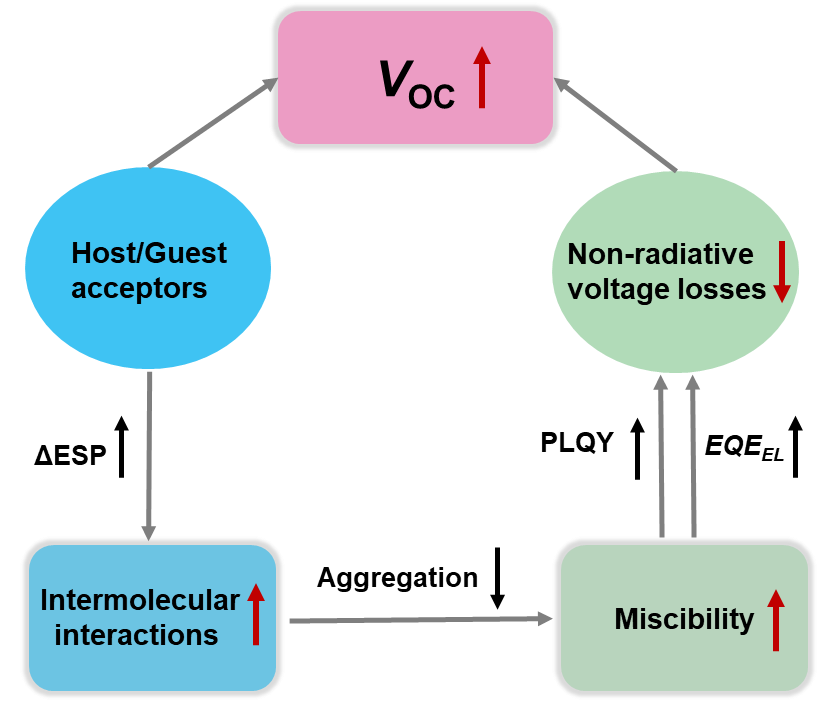A research group led by Prof. GE Ziyi at the Ningbo Institute of Materials Technology and Engineering (NIMTE) of the Chinese Academy of Sciences (CAS), has proposed a key strategy for optimizing guest components to minimize non-radiative voltage losses (?E3), thus achieving high-efficiency ternary organic solar cells (OSCs).
This work was published in Advanced Materials.
Due to the advantages of light weight, good mechanical flexibility and translucency, OSCs have garnered extensive attention in the field of organic electronic devices. The ternary strategy, in which one guest component is introduced into one host binary system, is considered to be one of the most effective and facile ways to achieve OSCs with excellent power conversion efficiencies (PCEs).
Various efficient guest components have been developed for binary host systems, however, there is still no effective method for predicting the effectiveness of guest components in improving device efficiency.
By virtue of density-functional theory (DFT) calculations, researchers at NIMTE designed and synthesized three asymmetrical non-fullerene acceptors (ANFs) with different electrostatic potential (ESP) distributions, namely ANF-1, ANF-2, and ANF-3.
These three ANFs were employed as guest acceptor in the well-known host system of D18:N3. Then the effects of the introduction of guest component on the photovoltaic properties were carefully investigated.
The experimental results indicated that a large ESP difference between the guest acceptor and host system leads to strong intermolecular interactions and a high miscibility of the two molecules, which improves the luminescent efficiency of the blend film and the electroluminescence quantum yield (EQEEL) of the device, thus decreasing the ?E3 of ternary OSCs.
Compared with ANF-1 and ANF-2-based ternary films, ANF-3-based ternary film exhibited larger ESP difference between the guest acceptor and the host acceptor, thus showed higher and more balanced mobility, and smaller size of phase separation, contributing to a more effective charge transport. As a result, the D18:N3:ANF-3 ternary OSC achieved the highest PCE of 18.93% with a low ?E3 of 0.236 eV.
This work has provided a key guideline for designing high-efficiency guest acceptors to further improve open-circuit voltage in the ternary OSCs: expanding the ESP difference between the guest acceptor and the host acceptor.
In addition, this rule has been verified in other reported high-efficiency ternary OSCs, demonstrating its excellent generality.
This study may shed light on the design and development of single-junction OSCs with PCE exceeding 20%.

Fig. The relationship between host/guest acceptors and performance (Image by NIMTE)






